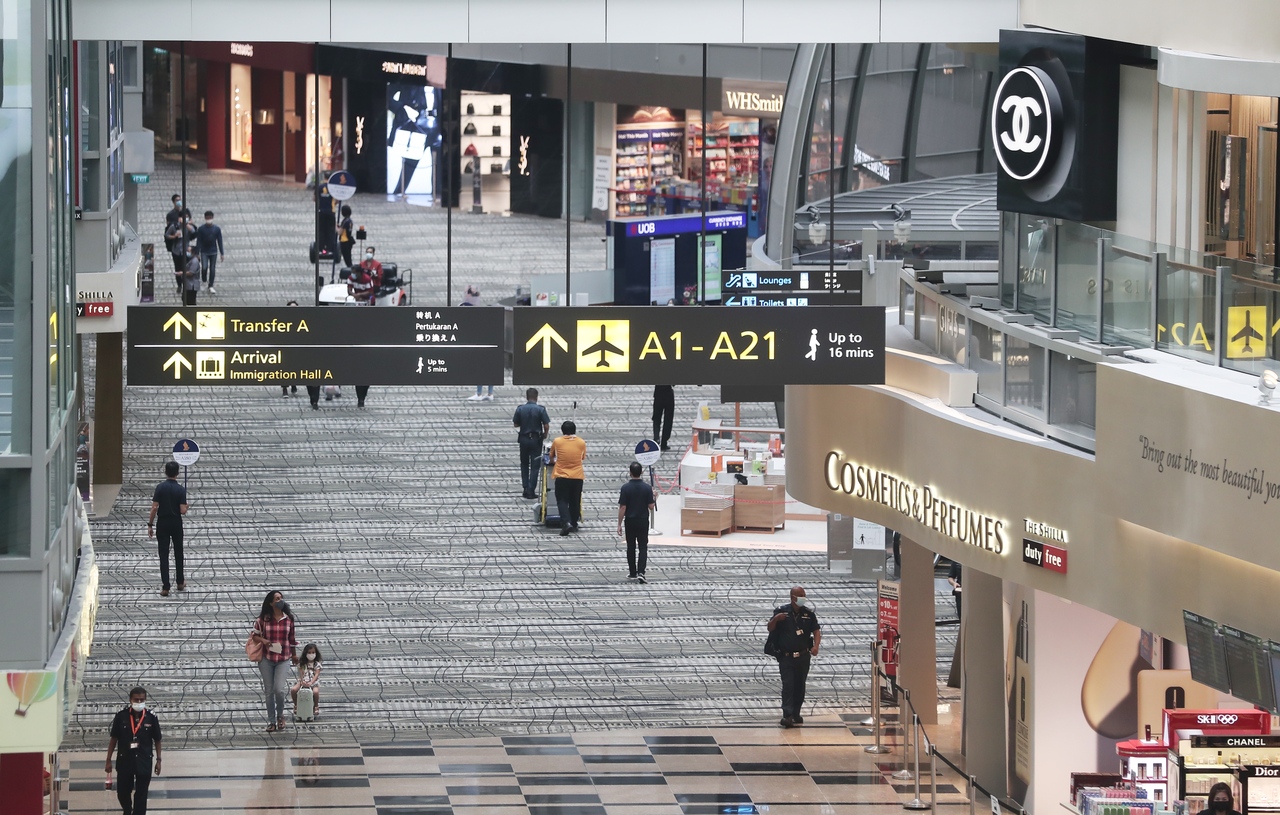Singapore-HK airfares spike before travel bubble opens
Sign up now: Get ST's newsletters delivered to your inbox

Fares have already surged 30 to 40 per cent.
ST PHOTO: KELVIN CHNG
Follow topic:
SINGAPORE - Ms Cherie Wong, 39, has not seen her family since Chinese New Year, and will now pay a premium to spend her Christmas holidays back home in Singapore.
The Singaporean interior design manager, who has lived in Hong Kong since 2007, decided to "grit (her) teeth and pay up" for a flight after the air travel bubble between Singapore and Hong Kong was announced last month.
Under the inaugural arrangement, travellers will be able to travel between the two air hubs without the need for quarantine, stay-home notice requirements or a controlled itinerary.
To fly, they just have to be in either Singapore or Hong Kong for a 14-day period before making the journey and have negative results from mutually recognised Covid-19 swab tests.
Ms Wong said: "I still have misgivings, given that the details of the air travel bubble are not yet clear. But at the same time, flight prices are skyrocketing. "I'm basically taking a gamble and locking in the air tickets before prices go too high."
The travel bubble is expected to kick in later this month. Fares, however, have already surged 30 to 40 per cent.
Ms Wong's pre-booked flight back to Singapore earlier in the year was cancelled and, after shifting it to December, she had to pay an extra $640 for her ticket.
Singapore Airlines (SIA) and SilkAir currently have 10 scheduled weekly flights this month and next between the two air hubs, down from the 49 weekly flights pre-pandemic. More flights are expected to be added once the arrangement officially starts.
Independent aviation analyst Brendan Sobie from Sobie Aviation noted that it is still too early to say what fares will look like until more details are released.
There will be caps on the number of travel bubbles flights which will be separate from the existing flights, he said, and fares for the bubble flights could be preset or capped.
However, the demand for travel between Singapore and Hong Kong will likely far exceed the supply in the initial months, he added.

"There has been an increase in bookings on (the current) flights, which is probably driven by passengers hoping they will be moved to flights that are part of the bubble once the bubble is announced, or passengers not realising these flights are not part of the bubble," he said.
"The increase in Singapore-Hong Kong flight searches and bookings the last few weeks is an indication of the pent-up demand for travel, but consumers should understand that flights under the bubble have not yet been announced or scheduled."
SIA said those who purchased tickets before the travel bubble opens can choose to rebook for a later flight without incurring extra charges. However, they may need to top up any fare differences.
The opportunities provided by the bubble are a shot in the arm for SIA, which is now seeking to make a tentative recovery from the worst crisis to have hit the air industry in history.
SIA told The Straits Times that in addition to a new long-haul flight between Singapore and New York's John F. Kennedy International Airport starting this month, it is also looking to reinstate flights to Brunei, Fukuoka, Kathmandu and Male in the coming months.
This means it will have flights to 41 destinations - still fewer than half of the 92 destinations it was flying to last year.
With the new additions, the SIA Group projects its passenger capacity to reach 15 per cent of pre-Covid-19 levels by the end of next month. This stood at 9.5 per cent last month.
Mr Sobie said figures so far indicate that SIA has been adding capacity back faster than demand, and that the number of passengers travelling remains extremely low.
With the continued strict requirements, quotas and closed borders, 43,000 people flew with the SIA Group in September, compared with 3.1 million people in the same month last year, he said.
"The very limited passenger traffic are not from tourists, but generally consists of one-way repatriating traffic. This includes workers departing or arriving in Singapore, as well as some transit traffic which is also generally one-way," he said.
"Passenger flights are being added as it is important strategically to restore the network, and there is also an opportunity to carry cargo on all additional passenger flights."
For some, even the promise of the travel bubble might not be enough to entice them back to flying. Mr Nitin Kakaria, 41, who needs to travel frequently around Asia for his work in the financial industry, said paying for the Covid-19 tests - which sometimes cost him more than $1,000 each - makes flying prohibitive.
"I'm not really concerned about the virus, as I think the Government has it under control, but the substantially higher costs mean it is not worth it unless I fly and stay in that country for two to three weeks," he said.
He will keep checking the fares to Hong Kong, however.
"Hopefully, the increases will stabilise," he said.
Correction note: The story has been corrected to say that there will be a cap on air travel bubble flights. We are sorry for the error.

